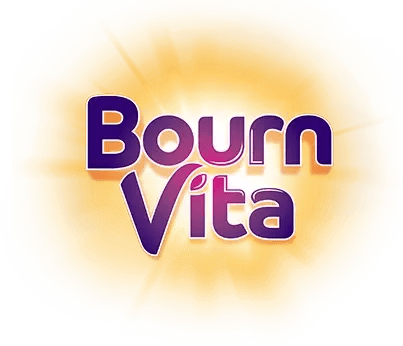- Base It on Grains
- Make Vegetables a Daily Habit
- Include a Variety of Fruits
- Choose Healthy Proteins
- Don’t Skip the Dairy (or Alternatives)
- Add Good Fats in the Right Amount
- Hydration and Balance Are Key
Introduction

As a parent, planning healthy meals for your child can be overwhelming, especially with the numerous options available. That’s where the food pyramid comes in; it’s a simple, easy-to-understand visual guide that shows how to balance different food groups throughout the day. According to The Dietary Guidelines For Indians, grains, vegetables, fruits, proteins, dairy, and healthy fats are the 5 categories. It helps you see what your child should eat more of and what to limit.
For Indian households, this can be easily adapted. Grains are roti, rice, or poha; proteins are dal, rajma, chana, paneer, and eggs; fruits and vegetables are whatever is in season. Milk, curd, and ghee fall under the dairy and fat category; nuts, seeds, and oils are good fats. When you use the food pyramid to plan your meals, you ensure your child gets all the essential nutrients like fiber, protein, vitamins, and calcium in the right amounts.
This also teaches children balance and portion control, showing them that no food is inherently bad, but moderation is key. Whether you are packing school tiffin, evening snack, or dinner, the food pyramid helps you build meals that support your child’s energy, focus, growth, and immunity. It’s not just a tool—it’s a habit-forming guide for lifelong health.
A Simple Guide For Parents To Understand The Food Pyramid In Nutrition

If you're trying to figure out how to feed your child well without overcomplicating things, the food pyramid can be your best friend. It provides a visual structure that explains how much of each food group your child needs daily. From grains and proteins to fruits, vegetables, dairy, and healthy fats, the pyramid promotes a balanced diet. When followed with Indian meals in mind, it becomes even more relatable and easy to apply. Here's how you can use it as a tool to plan everyday meals that support your child’s growth, energy, and immunity.
Base It on Grains
Whole grains like roti, brown rice, jowar, bajra, and daliya should form the foundation of your child’s meals. According to a study published in Nutr Rev. 2022, grain provides complex carbohydrates for sustained energy and fiber for digestion. Avoid consuming too many refined flours, such as maida, which can cause sugar spikes and cravings.
Make Vegetables a Daily Habit
As per a study published in J Food Sci Technol. 2011, vegetables like carrots, beans, spinach, beets, and lauki were rich in vitamins and fiber. Add them to parathas, dals, or soups. Encourage a habit of eating at least two servings of vegetables per day. Seasonal and local produce ensures better nutrition and taste.
Include a Variety of Fruits
According to CCRH, fruits like bananas, apples, papaya, chikoo, and guava are loaded with vitamins and antioxidants. These support your child’s immunity, skin health, and digestion, and offer fruits as snacks, in smoothies, or in lunchboxes to build consistent fruit-eating habits.
Choose Healthy Proteins
Research done by Dietary Guidelines for Indians, suggested including dal, chana, rajma, eggs, paneer, curd, and nuts, which build muscles and support mental focus. If your child is lactose intolerant, offer tofu, soya chunks, sprouts, or nut-based yogurts. Make sure to add protein to every main meal to support your kids' balanced growth.
Don’t Skip the Dairy (or Alternatives)
According to FSSAI, milk, paneer, and curd are great sources of calcium and vitamin D for kids. If your child is lactose intolerant, consider alternatives such as enriched almond milk, ragi, sesame seeds, or tofu. Pair these with vitamin D-rich foods to boost calcium absorption.
Add Good Fats in the Right Amount
Research conducted by the Indian Heart J. 2016, states that ghee, nuts, seeds, and oils like mustard, coconut, or groundnut oil are good sources. Spread peanut butter on whole-grain toast or use ghee while cooking dals or sabzis. Make sure to avoid deep-fried snacks and stick to moderate portions. These snacks are not good and unhealthy for kids.
Hydration and Balance Are Key
Ensure your child drinks enough water, especially in hot weather. You can add coconut water, chaach, or nimbu pani for variety. Teach kids about portion control and mindful eating so that they can enjoy food that is more nutritious and beneficial for their bodies. The pyramid isn’t about restriction—it’s about knowing how much of what to eat.
Conclusion

Understanding the food pyramid helps you build a balanced plate for your child every day. It simplifies how much of the grains, veggies, fruits, proteins, and healthy fats your child needs to grow well and stay active. Whether your child is lactose intolerant or picky with vegetables, there are always smart swaps to keep their meals nutritious. By following the pyramid as a flexible guide—not a rigid rule—you’ll ensure they get a mix of essential nutrients without stress. With variety, moderation, and some creativity in your kitchen, you can turn every meal into a strong step toward your child’s better health.
Her love for storytelling began with reading her grandfather’s speeches, where Tarishi saw the power of words in creating lasting memories. Combining her passions for food and writing, she has turned her life into a fulfilling path of sharing stories that celebrate flavours and how food brings communities together.
The views expressed are that of the expert alone.
The information provided in this content is for informational purposes only and should not be considered a substitute for professional medical advice, diagnosis, or treatment. Always seek the advice of your physician or another qualified healthcare provider before making any significant changes to your diet, exercise, or medication routines.
References
https://pmc.ncbi.nlm.nih.gov/articles/PMC4990724/
https://fssai.gov.in/upload/uploadfiles/files/Report_Edible_Oil_Survey_27_01_2022.pdf
https://fortification.fssai.gov.in/commodity?commodity=fortified-milk
https://www.nin.res.in/dietaryguidelines/pdfjs/locale/DGI24thJune2024fin.pdf
https://www.ccrhindia.nic.in/WriteReadData/LINKS/Compendium0c3fc504-fd77-45ab-9148-2407a787276c.pdf
















